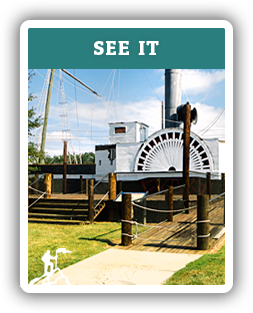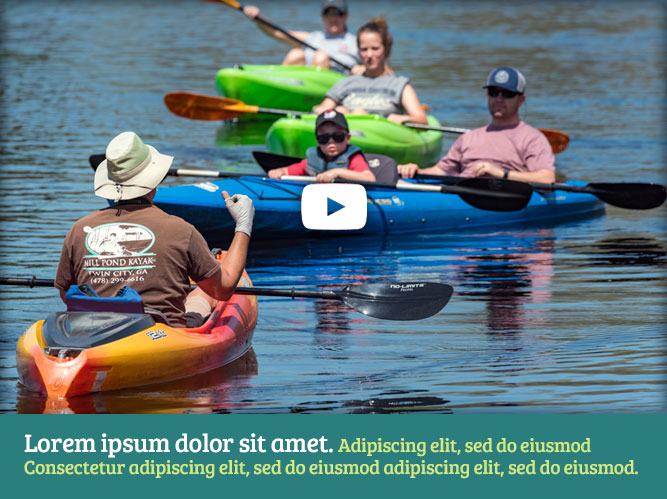With miles of wide, pristine beaches, excellent camping, dense
maritime forests, historic mansions, and breathtaking ruins, Cumberland Island
National Seashore is as enchanting as it gets. One trip to Georgia’s
southernmost barrier island is all it takes to discover there’s no coastal
escape quite like it.
The trek to Cumberland Island, which is only accessible by
boat, begins in the quiet coastal town of St. Marys, GA. The walkable streets
and waterfront make it a pleasurable respite in Camden County, which is also
home to Naval Submarine Base Kings Bay. Cumberland Island Ferry
reservations are recommended as ferry trips regularly sell out in advance;
however, tickets can be purchased the day of travel no later than an hour
before the desired ferry. You can also pay for your national park entrance fee
at the ferry office, while overnight camping would need to be reserved in
advance through the federal recreation site here.
There is plenty of day and overnight parking in designated areas
but be sure to leave extra time to walk to the ferry dock, which is roughly
three blocks from the ferry ticketing building. While bikes are available to
rent once on the island, the $10 fee to bring your personal bike over on the
ferry is not cost prohibitive and is in fact cheaper than a rental bike. If you
have a bike you like with tires that can handle the sandy roads and bike paths,
it will be worth it to bring it, especially if you want to cover ground as you
explore.
However you decide to travel, be sure to pack light, bring
plenty of water, and take your trash with you. There are no trashcans on the
island as it is designated as a “pack out” preserve and only water on the south
end of the island is potable from the tap.
The ferry ride is pleasurable and allows visitors to soak up
the sights, smells, and sounds of the St. Marys River that divides Georgia and
Florida before turning north up Fancy Bluff Creek en route to the Sea Camp Dock
and ranger station on the west side of the island.
Once on Cumberland Island, visitors should determine which
direction they’d like to explore and how long they plan to stay, if they’ve not
done so already. With 50 miles of hiking trails, a plan is essential to making
the most of your trip.
The southern end of the island is the most popular section
for day visitors because it is the most walkable and can be traversed in a
daytrip. Not only does the south end feature several historic structures and multiple
environments in a relatively small area, it is the most likely area to see the
famed feral horses of Cumberland Island.
About North End Hiking
Hiking north on the Parallel Trail, or Main Park Road, will
take you through the heart of the island under a draping canopy of live oaks,
across forest floors packed with palmetto, through tall stands of stately
pines, over open fields, near tidal creeks, freshwater wetlands, and lakes. For
a true backcountry experience, consider taking Parallel Trail or one of the
many other backcountry and wilderness trails that traverse the island. Biking
is only permitted on the Main Road and other designated trails, so be sure to
follow the park map and park signage. A sturdy bike and a decent fitness level
would be the optimal way to cover most of the island in one day.
If you are planning on hiking or biking north, there are
some critical points to remember. The only place to find drinking water north
of Sea Camp is at the Plum Orchard Mansion. All other water – whether from a
spigot or not – must be treated before drinking. The Wilderness boundary lies 5
miles north of the Sea Camp dock. Due to the distance, it is best explored when
visitors have more than regular day visit hours.
Due to the remote nature of the island, hikers in the wilderness should:
- take time to prepare and pack properly
- let a friend or family member know their itinerary
- take responsibility for their own safety
If you are planning to trek some distance north, remember
that the last ferry off the island leaves at 4:45 p.m. seven days a week,
except for December-February when there’s no ferry service Tuesday or
Wednesday.
Recommended Hike: South End Loop
Among the island’s most popular pathways, this series of
trails totaling 4.3 miles will optimize time and allow hikers to see the
maximum number of sights in the southern portion of the preserve. While there
are limited NPS and residential vehicles on the island, it is best for walkers
to avoid the dust and traffic along the sandy Main Road. We suggest following
this trail loop for the best cross section of the island.
After the boat docks at Sea Camp, you’ll head south along
the River Trail which runs parallel to the Intracoastal Waterway. Hikers will
experience the intersection of an intracoastal and maritime forest habitat,
which includes many species of bird in the canopy and along the water’s edge.
The trail also provides several viewing points of Cumberland’s western-facing
shore, along with intermittent benches where you can stop and rest.
River Trail’s southern terminus is in the Dungeness dock
area, which features the Ice House Museum, the Captain’s House, and possibly
some feral horse sightings. Once you reach Dungeness Dock, head southeast for
0.3 miles before bearing right on the Main Road for the final 0.2 miles as you
come into view of the Dungeness Ruins.
As you approach, it may feel as if you are transported to
another time. Those with an active imagination can almost picture lavish
parties on the lawn and women with parasols roaming the grounds. Now, there’s
only brick and tabby ruins; however, they are quite breathtaking and can make
even a novice photographer look like a pro. Be sure to check out the west side
of the property to see some excellent marsh and intracoastal views from the
dock.
Dungeness is the most popular area for the feral horses that
roam the island. The current herd has descended from horses left on the island
by residents long ago. They are not fed or cared for by the park service and
are not trained to interact with humans in any way. Feeding and petting is
strictly prohibited by the park service. However, that is not an issue because
the horses steer clear of human visitors to the island. Other animals on the
island include armadillo, deer, and of course several avian species that can be
seen and heard all over the island.
Once you’ve had your fill, you’ll head east along Dungeness
Trail, making sure to fill up your water bottle and utilize the restrooms
before advancing further. Follow the signs for the Green-Miller Cemetery, which
begins a 0.6-mile pathway to the beach.
Past the cemetery you’ll take the boardwalk through the
marsh to a scenic overlook where you’ll be able to see the southern tip of
Cumberland Island and the northern end of Amelia Island in the distance. You’ll
continue east where the boardwalk meets back up with the sandy Dungeness Trail
before breaking off once again. The boardwalk descends toward the beach as the
dunes open to showcase the Atlantic Ocean.
The wide, clean and quiet beaches only enhance the sights,
sounds, and smells of nature. Swimming is permitted, although no lifeguards are
on duty. Most hikers choose to rest near the tide line and dip their feet in
before moving on.
If long walks on the beach tug at your heart strings, then
this 1.5-mile section of the loop is for you. While the sand is compact near
the tideline, making walking relatively easy, windy days can be a challenge if
you’re walking against the breeze.
After your jaunt on the beach, you’ll kick off the sand and
head west toward Sea Camp Campground. Here you’ll find drinking fountains and
restrooms as well as showers for nearby campsites. Many of these sites are so
secluded that you can barely see them through the underbrush of palmettos. Staying
overnight one or two days gives campers the chance to truly experience the
quiet and solitude of this sparsely populated isle.
Passing through the campground, you’ll cross Main Road one
final time before returning to Sea Camp. Additional information and tidbits can
be gleaned from the helpful park rangers, who give regular talks on the habitat
and history of the island. The ferry leaves the dock on schedule, so it’s best
to arrive a little early than the set departure time to ensure you don’t become
an unplanned and unprepared overnight guest.









 Distance: 4.3
Distance: 4.3
 Difficulty: Moderate
Difficulty: Moderate
 Directions
Directions





 2 months ago
2 months ago





